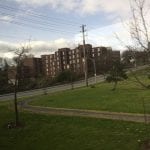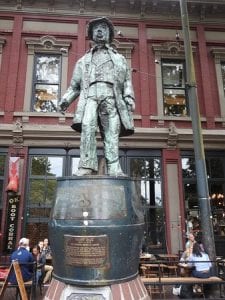The Wild West (of British Columbia)
For this project, we did a “Namesake Project”. Our driving question was “How can we help people who aren’t from BC know more about BC’s history?” Most of the class went to Victoria on a field study, but I stayed behind and worked on a Vancouver location. Before I get into the video, I wanted to talk about what we learned about the BC Wild West.
At first when Ms. Maxwell said we learning about the Wild West, I was really excited about learning about it because I thought it was the “Wild West”, like the American Wild West, like gunslingers. I have always been fascinated with the American Wild West. Wyatt Earp, was a well known sheriff in the wild west (see picture), so since we were doing a namesake project I thought I could do Wyatt Earp. I have a very distant connection to Wyatt as my great, great, great, great (I think that’s all the greats) Grandfather was Washington Peck and lived one ranch down from In fact my Grandmother wrote a book about Washington Peck from his diaries (Erb, Susan. On the Western Tails. The Overland Diaries of Washington Peck. Norman, Oklahoma: The Arthur H. Clark Company, 2009). Washington Peck himself went across the Oregon Trail twice, which was a very hard journey. He saved the girl who was carrying the seed of the almond tree that started the almonds in California, which is where most of the world’s almonds come from. You should probably look that up.
Since our class went away to Victoria, we focused mostly on Victoria and how people coming to BC should learn about the history of BC from a person from Victoria’s perspective.
Vancouver Island is the traditional territory of the Lekwungan people of the Coast Salish Nation, and the Songhees and Esquimalt Nations are part of this group.
In 1843 there were only about 200 people who lived in Victoria and everyone worked for the Hudson’s Bay Company because of moving the fur from the fur trade to trade outside of Canada. The Hudson’s Bay Company moved their Fort to Victoria because they thought that the International Border was going to be moved to the 49th parallel because of the Oregon Treaty. So they moved from Vancouver, WA to Victoria. The fort was first called Fort Albert, but then was changed to Fort Victoria because the Queen of England’s name was Victoria.
In 1858, Victoria became the hot spot for people coming over to find gold and become rich in the Cariboo Gold Rush. The population went from 230 people to 20,000 people in a few weeks, which is really crazy. I can’t imagine, just in the span of 3 weeks being a regular kid with 200 people in a small town to like a city. In the summer, me and my family drive up the Gold Rush Trail in the Cariboo to visit my other grandparents on a lake and spend two weeks there. It is a crazy distance to think about travelling on horseback and with wagons. Especially after coming all the way from Victoria, and before that England or Europe or Australia.
In 1871, Victoria became the Capital City of BC, even though Vancouver has the most people now and is a way better city. This happened when BC became the 6th Province to join the Dominion of Canada, as it was called then. This guaranteed that the naval base would be built in Esquimalt on the Pacific Coast. I have actually stayed in the base in Esquimalt for a marksmanship competition through the Cadet program. I got to walk around on base and see all of the ships. I’ve added some pictures from when I was there.
We used the Confederation of Canada to assess the historical significance of an event. This is the worksheet Luciano and I did on historical significance.
- Assessing Historical Significance
We also learned about the Parliament and the government in Canada, which is split into federal, provincial, and municipal governments. We learned about what each branch of governments’ job is in class. Here is an image from our Learning Guide, which I think explains it a lot better than I do.
And here is my Bill Passing Visual from class.
Now, finally, for the fun part! For my Namesake Project, I got “Gassy” Jack from Gastown. Yeah! Before I filmed my video I researched Gassy Jack and found out that his real name was John Deighton, and he was from Hull, England.
- Gassy Jack Statue
- Gassy Jack the man
I got to go down to Gastown to do my filming, which was a lot of fun. In the first part of my video where I am narrating, I used the rule of thirds. The rule of thirds is if you picture the image from the camera is divided into a grid. If you are filming a person, the subject should be in the third of the frame on either side of the grid, not the middle. Here is a picture to try to explain it better.
This format is very important because we do a lot of video projects of us talking, or filming someone. So using this will definitely help in the future, and in this project it made the video look better and made it look more professional. See what you think.
 Wyatt Earp
Wyatt Earp










